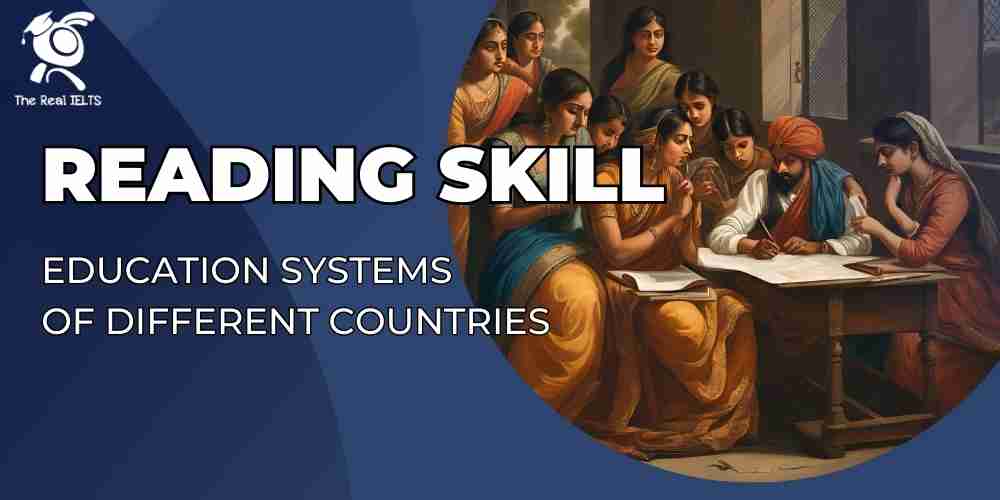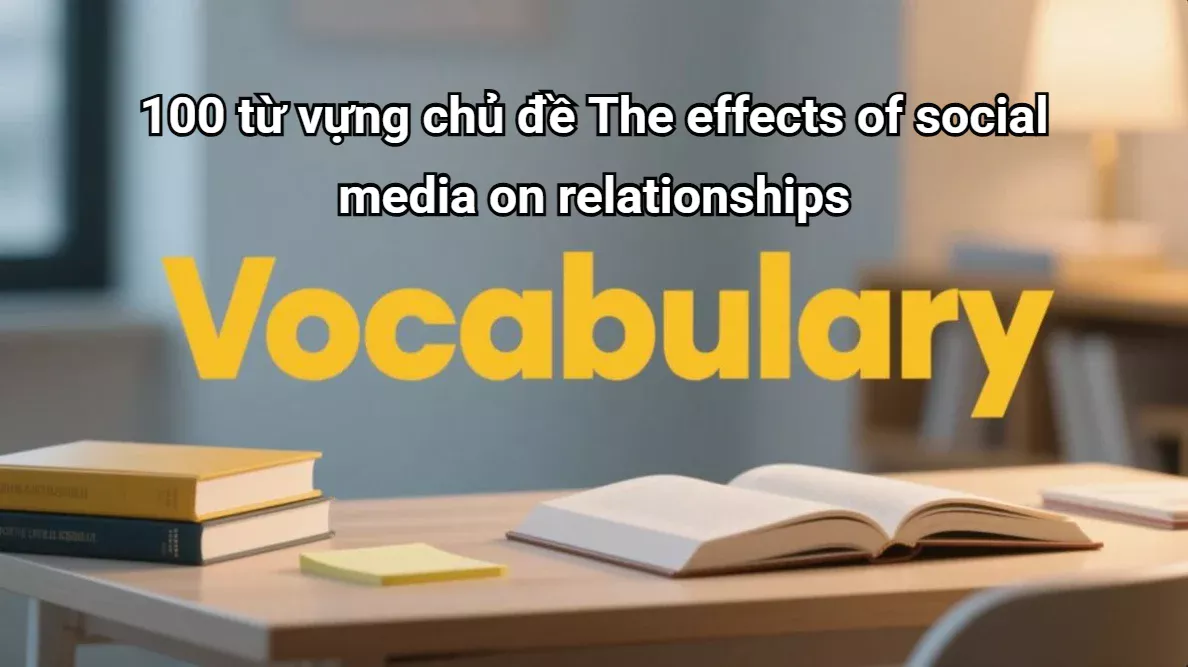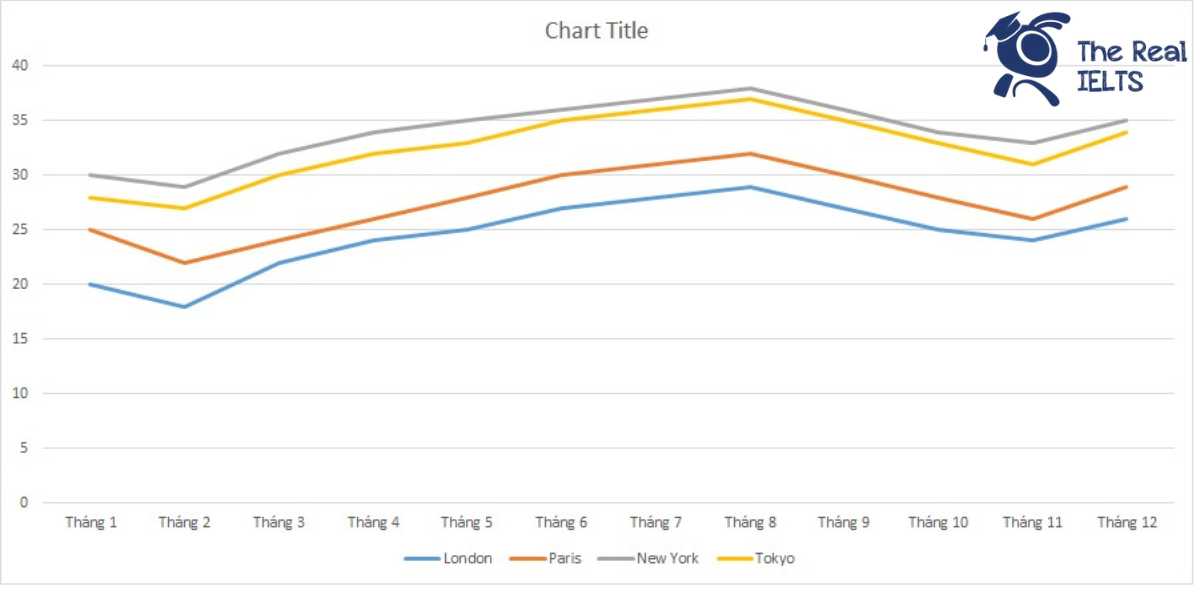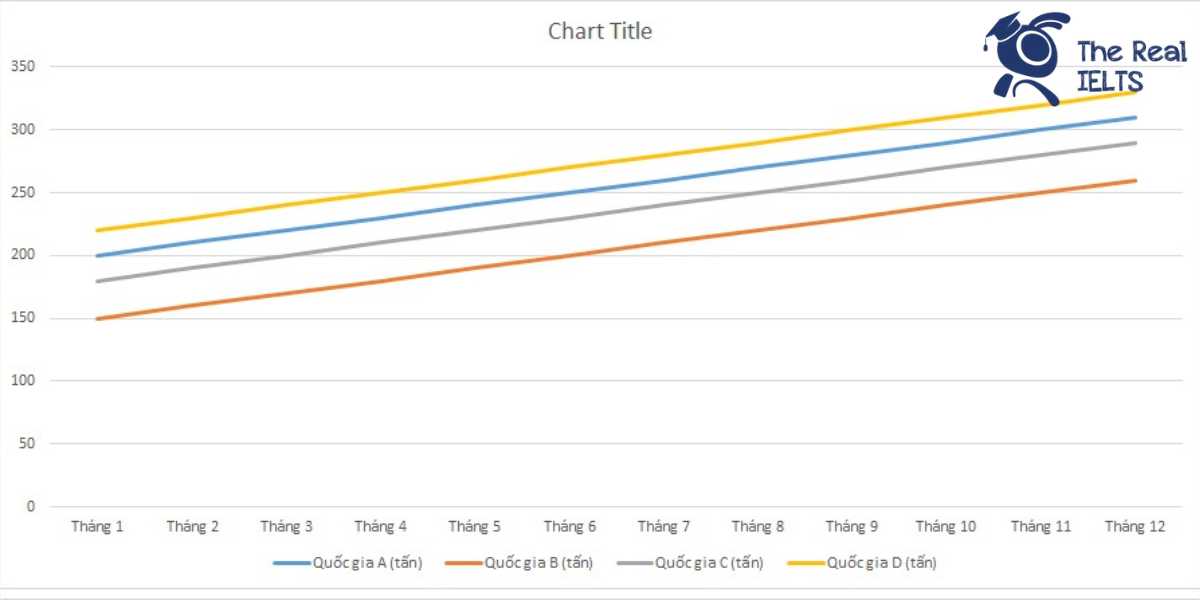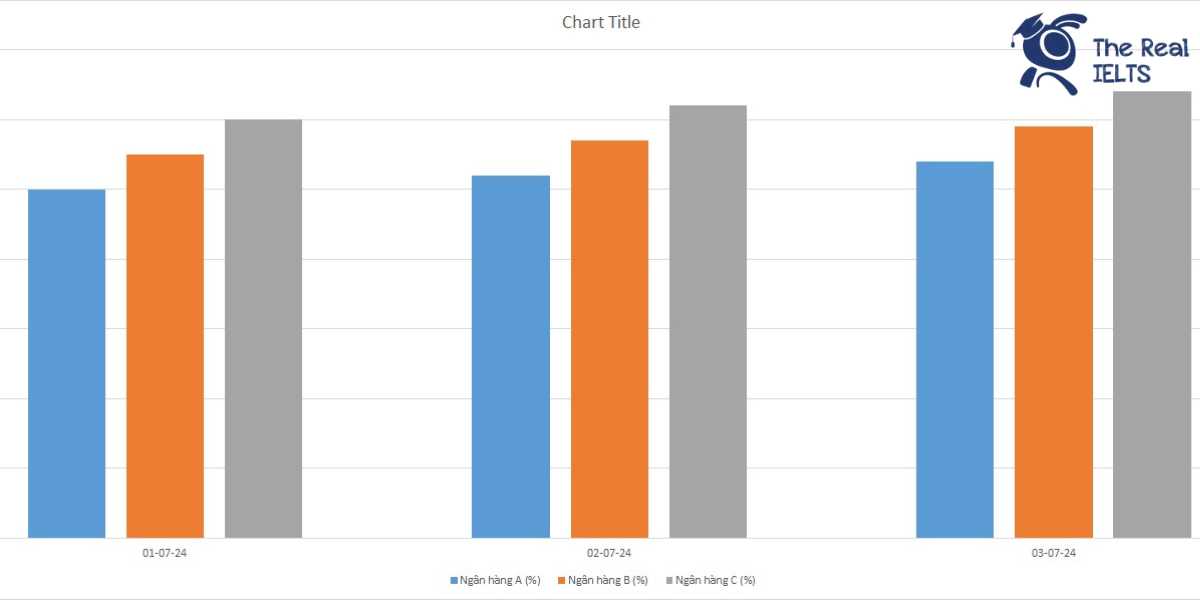IELTS Reading 32: Education systems of different countries là chủ đề thuộc chuỗi bài luyện tập 11 dạng bài IELTS Reading và các bài tập luyện tập.
Học lại bài cũ: IELTS Reading 31: Distance education and online learning.
IELTS Reading: Education Systems of Different Countries
Education systems around the world vary greatly in terms of structure, curriculum, and objectives. In Finland, for example, the education system is widely recognized for its innovative approach. Finnish students often have shorter school days and receive minimal homework, allowing them to focus more on creativity and problem-solving rather than rote learning. Teachers in Finland enjoy a high level of professional autonomy and are respected members of society, which contributes significantly to the success of the system.
In contrast, the Japanese education system emphasizes discipline, respect, and hard work. Japanese students have a rigorous schedule, including long school hours, after-school tutoring, and extensive homework assignments. This approach is believed to instill resilience and diligence in students, preparing them for a competitive job market. However, critics argue that this intense system may place excessive stress on students.
Meanwhile, in the United States, the education system is known for its diversity. American schools provide students with a variety of options, such as Advanced Placement (AP) courses, International Baccalaureate (IB) programs, and vocational training. This flexibility allows students to pursue their interests and career goals at an early stage. However, the reliance on standardized testing in the U.S. is often criticized for potentially limiting creativity and critical thinking.
Each country’s approach to education reflects its unique cultural values and societal priorities. While some systems focus on developing academic skills through rigorous training, others prioritize holistic development by promoting student well-being. Analyzing these differences can offer valuable insights into the strengths and weaknesses of each approach and suggest ways to improve educational outcomes globally.
Question
1. Multiple Choice (Chọn đáp án đúng)
Which of the following best describes the Finnish education system?
A. Emphasizes hard work and long school hours.
B. Focuses on creativity and problem-solving.
C. Relies heavily on standardized testing.
D. Encourages students to choose from diverse courses.
2. True/False/Not Given (Đúng/Sai/Không có thông tin)
Decide if the following statements are True, False, or Not Given.
- Finnish teachers have less freedom compared to teachers in other countries.
- Japanese students receive more homework than Finnish students.
- The United States education system does not include Advanced Placement (AP) courses.
3. Yes/No/Not Given (Có/Không/Không có thông tin)
Do the following statements agree with the views of the writer?
- Finnish students are given more freedom in their learning.
- The Japanese education system places too much pressure on students.
- Standardized testing limits American students’ ability to think creatively.
4. Matching Information (Ghép thông tin)
Match the information with the paragraphs in the text. Write the correct letter (A, B, or C) next to each question.
A. Finland
B. Japan
C. United States
- Students have a flexible selection of courses to choose from.
- Teachers are highly respected and have significant control over their work.
- The education system aims to build resilience in students.
5. Matching Headings (Ghép tiêu đề)
Choose the correct heading for each paragraph from the list below.
i. Emphasis on Discipline and Hard Work
ii. A Flexible Approach with Diverse Options
iii. An Education System Focused on Innovation
Paragraph 1: ________
Paragraph 2: ________
Paragraph 3: ________
6. Matching Sentence Endings (Ghép kết thúc câu)
Complete each sentence with the correct ending from the list below.
- Finnish students have more free time because they…
- Japanese students are trained to be resilient by…
- American students can explore their interests early due to…
Endings:
A. choosing from diverse courses and programs.
B. the long school hours and extensive homework.
C. have shorter school days and minimal homework.
7. Sentence Completion (Hoàn thành câu)
Complete the sentences below with NO MORE THAN TWO WORDS from the passage.
- Finnish teachers are seen as __________ members of society.
- Japanese education is aimed at preparing students for a __________ job market.
- In the U.S., students have the option to pursue the __________ program.
8. Summary Completion (Hoàn thành bản tóm tắt)
Complete the summary using words from the box.
Summary:
Education systems vary globally. In Finland, students have short school days and receive little homework, fostering __________ and problem-solving. The Japanese education system, however, emphasizes __________ and resilience through a __________ schedule. The United States allows students to choose from various programs, offering them __________ from an early age.
Word Box:
discipline, flexibility, competitive, creativity, intense, respected
9. Diagram Label Completion (Hoàn thành nhãn sơ đồ)
Label the diagram below based on information from the passage.
| Education System | Key Characteristics |
|---|---|
| Finland | (a) __________ |
| Japan | (b) __________ |
| United States | (c) __________ |
Labels:
(a) Focus on creativity
(b) Intense workload
(c) Course flexibility
10. Short Answer Questions (Câu hỏi trả lời ngắn)
Answer the following questions using NO MORE THAN THREE WORDS.
- Which country has teachers with high professional autonomy?
- What kind of market are Japanese students prepared for?
- What type of testing does the U.S. rely on heavily?
11. Table/Flowchart/Note Completion (Hoàn thành bảng/sơ đồ dòng/chú thích)
Complete the table below. Use NO MORE THAN TWO WORDS from the passage for each answer.
| Country | Education Focus | Method |
|---|---|---|
| Finland | Creativity and problem-solving | Short school days, __________ |
| Japan | __________ and resilience | Long hours, extensive homework |
| United States | __________ and diverse options | AP, IB, vocational training |
Đáp án
1. Multiple Choice (Chọn đáp án đúng)
Which of the following best describes the Finnish education system?
Đáp án: B. Focuses on creativity and problem-solving.
2. True/False/Not Given (Đúng/Sai/Không có thông tin)
- Finnish teachers have less freedom compared to teachers in other countries.
Đáp án: False (They have a high level of professional autonomy.) - Japanese students receive more homework than Finnish students.
Đáp án: True - The United States education system does not include Advanced Placement (AP) courses.
Đáp án: False (The passage mentions AP courses as an option.)
3. Yes/No/Not Given (Có/Không/Không có thông tin)
- Finnish students are given more freedom in their learning.
Đáp án: Yes - The Japanese education system places too much pressure on students.
Đáp án: Yes - Standardized testing limits American students’ ability to think creatively.
Đáp án: Yes
4. Matching Information (Ghép thông tin)
- Students have a flexible selection of courses to choose from.
Đáp án: C (United States) - Teachers are highly respected and have significant control over their work.
Đáp án: A (Finland) - The education system aims to build resilience in students.
Đáp án: B (Japan)
5. Matching Headings (Ghép tiêu đề)
Paragraph 1: iii. An Education System Focused on Innovation
Paragraph 2: i. Emphasis on Discipline and Hard Work
Paragraph 3: ii. A Flexible Approach with Diverse Options
6. Matching Sentence Endings (Ghép kết thúc câu)
- Finnish students have more free time because they…
Đáp án: C. have shorter school days and minimal homework. - Japanese students are trained to be resilient by…
Đáp án: B. the long school hours and extensive homework. - American students can explore their interests early due to…
Đáp án: A. choosing from diverse courses and programs.
7. Sentence Completion (Hoàn thành câu)
- Finnish teachers are seen as respected members of society.
- Japanese education is aimed at preparing students for a competitive job market.
- In the U.S., students have the option to pursue the AP program.
8. Summary Completion (Hoàn thành bản tóm tắt)
Đáp án:
Education systems vary globally. In Finland, students have short school days and receive little homework, fostering creativity and problem-solving. The Japanese education system, however, emphasizes discipline and resilience through a intense schedule. The United States allows students to choose from various programs, offering them flexibility from an early age.
9. Diagram Label Completion (Hoàn thành nhãn sơ đồ)
| Education System | Key Characteristics |
|---|---|
| Finland | (a) Focus on creativity |
| Japan | (b) Intense workload |
| United States | (c) Course flexibility |
10. Short Answer Questions (Câu hỏi trả lời ngắn)
- Which country has teachers with high professional autonomy?
Đáp án: Finland - What kind of market are Japanese students prepared for?
Đáp án: Competitive job market - What type of testing does the U.S. rely on heavily?
Đáp án: Standardized testing
11. Table/Flowchart/Note Completion (Hoàn thành bảng/sơ đồ dòng/chú thích)
| Country | Education Focus | Method |
|---|---|---|
| Finland | Creativity and problem-solving | Short school days, minimal homework |
| Japan | Discipline and resilience | Long hours, extensive homework |
| United States | Flexibility and diverse options | AP, IB, vocational training |


